The Flow of Leadership and the ROI of Coaching
Recently, I worked with the leadership team of a small financial services company.
Steve[1], one of the coachees, wanted to work on a more efficient use of his time; when we sat down to talk about his needs for coaching, he shared that he constantly found himself giving direction to his team and even performing administrative and clerical tasks. His team enjoyed working with him but he felt stuck in his efforts to efficiently meet their goals.
As part of the coaching solution for this client, we included a 360-degree inventory and an assessment based on the Enneagram. The different assessments presented the client as an effective communicator and an inspiration to others. However, it became crucial for Steve to observe his own narrative around being a leader who tended to solve other people’s problems instead of holding them accountable.
His enthusiasm as a leader and for his work was reflected on the top-rated aspects according to his 360 Degree Report:
Top Five Rated Aspects from Steve’s 360-Degree Report According to Others
-
- Honors commitments and follows through even when faced with challenges.
- Takes ownership of responsibilities.
- Enjoys participating in teamwork. Seeks collaboration and participation by asking for and encouraging the sharing of ideas, experience, knowledge, and perspectives.
- Shows a deep understanding and acceptance of life with all its ups and downs.
- Remains objective, respectful, and non-judgmental in discussions.
How Did the Enneagram Support His Journey?
Steve tends to react to life from an Enneagram type 3 perspective. The results from the different assessments were consistent with the leadership style of his Enneatype —someone focused on meeting goals, striving to be the best, driving his team to great results, and working hard to get the job done. All great qualities for success and also elements that clearly made him a busy leader starved for time. As we progressed in coaching, a different narrative emerged around Steve’s power in being a supportive leader, rather than a hands-on rescuer for his team.
Behavioral Change outcomes
Steve discovered it was important for him to stay in the moment. While people enjoyed working with him and saw him as someone who promoted their participation, his obsessive focus on execution many times lead him to do the work of others. Staying in the moment gave him space to ask powerful questions and a stronger capacity to be a leader who motivates, guides and empowers. This experience reinforced his assertiveness in two competency areas:
- Leadership: Strengthening his capacity to give empowering feedback, balancing his orientation toward action with encouragement.
- Improved communication skills: Discovering the importance of powerful questions.
The ROI of Coaching
The ROI calculation is the reflection of the changes originated from the reformulation of Steve’s vision as a leader who is supportive without being directive. This shift resulted in an equivalent savings of 250 hours of labor and an ROI of 224%. In other words, for every 1 dollar invested in coaching, the company received 2.24 dollars back after all costs of the coaching were captured.
Why This Matters?
As coaches, we accompany a process that is already taking place. During this process, we become available to the client in a balance of effort and presence. Individuals and companies value measurable, tangible results of coaching. An ROI of 224% is great!
The benefits of coaching go beyond positive financial indicators. Seeing individuals and organizations back in flow is priceless. Witnessing Steve as a leader who strongly believes his mentoring, coaching, communication, leadership, and management skills benefited from coaching is priceless. Additionally, getting feedback from team members who feel they can reach higher levels of work, purpose, and accountability with empowerment from his leader is priceless.
This is the case of someone who —already at the start of coaching— was regarded as a strong leader. Coaching is not about fixing people. It is about using multiple tools and approaches that reflect back to us where we’re resisting a state a flow.
[1]This is a fictitious name to protect the identity of the client.
